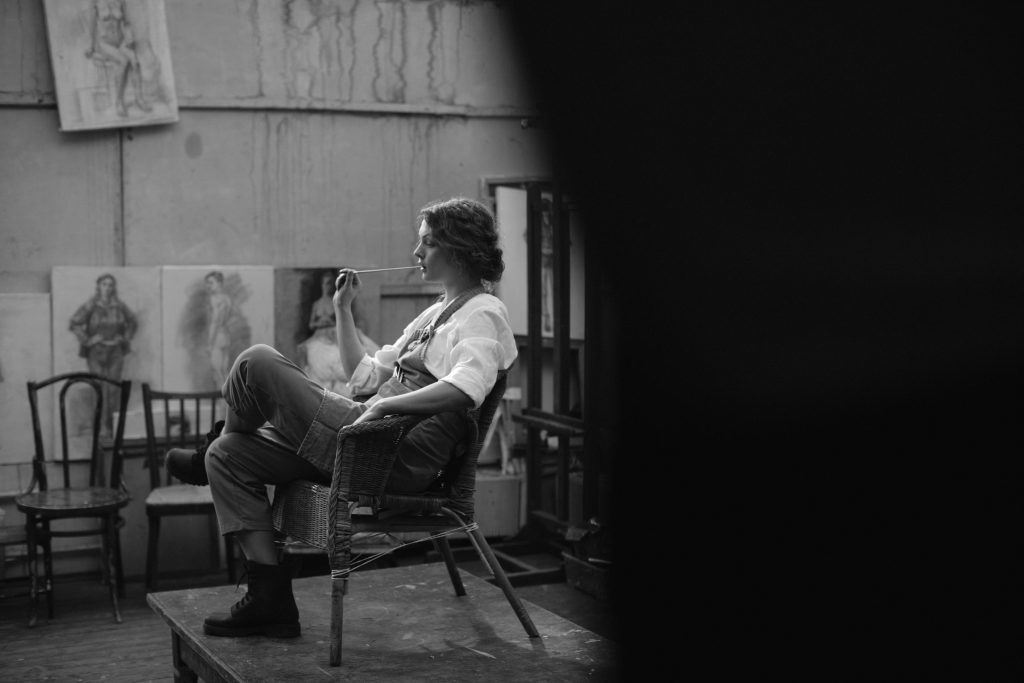Determining the value of your artwork can be as elusive as it is crucial. For artists, pricing is more than just a matter of financial exchange; it’s a reflection of their creative journey, their skill, and the unique perspective they bring to their work. However, establishing the right price for your art can be complex and fraught with uncertainties. Here’s a comprehensive guide to help you navigate the intricacies of art pricing, ensuring that you set a value that respects both your artistic integrity and your financial needs.

Understand the Market
Before setting a price, it’s essential to understand the current art market. This involves researching:
- Similar Artists: Look at artists with a similar style, medium, and experience level. Compare their pricing and note how their works are presented and sold.
- Gallery Standards: Investigate pricing trends in galleries and art fairs. Galleries often have pricing structures based on size, medium, and artist reputation, which can serve as a useful benchmark.
- Online Marketplaces: Browse online art marketplaces to gauge how artworks similar to yours are priced. Platforms like Saatchi Art, Artfinder, and Etsy can provide insights into the range of prices for comparable pieces.
Factor in Your Costs
Every piece of art involves various costs, including materials, studio space, and time. Calculating these costs helps ensure that your pricing covers your expenses and contributes to your profitability. Break down your costs into:
- Material Costs: Include paints, canvases, brushes, and other supplies. Don’t forget to account for framing, if applicable.
- Time Investment: Estimate how long it took to create the artwork and assign an hourly wage to your time. This wage should reflect your experience and the complexity of the work.
- Overhead: Consider studio rent, utilities, and other operational expenses.
By adding these costs to your pricing formula, you’ll ensure that you’re not just covering your expenses but also making a profit.
Evaluate Your Experience and Reputation
Your level of experience and your reputation in the art world are crucial factors in determining the price of your work. Artists with established careers and strong portfolios can command higher prices. Consider:
- Artistic Achievement: If you have a history of exhibitions, awards, or publications, this enhances your credibility and can justify a higher price.
- Sales History: Past sales and commissions are strong indicators of the value of your work. If you have a track record of successfully selling pieces at certain price points, use this as a guideline for future pricing.
- Reputation: Your reputation among collectors, critics, and peers influences how your work is perceived and valued. Building a strong network and positive relationships can enhance your market position.
Determine the Pricing Formula
Creating a pricing formula can help standardize how you price your artwork. Here’s a simple method to start with:
- Base Price: Calculate a base price per square inch or square foot of your artwork. This can vary depending on your experience level, the complexity of the work, and market demand.
- Additions: Include additional costs for framing, special techniques, or unique materials.
- Markups: Apply a markup to cover your time, expertise, and profit margin. This could be a percentage of the base price or a fixed amount.
For example, if your base price for a painting is $5 per square inch, and the painting is 24×36 inches, the base price would be $5 x (24×36) = $4,320. If framing costs $300, and you want to add a 20% markup for profit, your final price would be $4,320 + $300 + (0.20 x $4,320) = $5,442.

Consider the Emotional and Aesthetic Value
Art is not just about materials and time; it’s also about the emotional and aesthetic impact it has on viewers. This subjective value can influence how you price your work. Reflect on:
- Emotional Impact: If your artwork evokes strong emotions or tells a compelling story, it may justify a higher price.
- Aesthetic Appeal: The overall beauty and craftsmanship of your work can affect its market value. Art that stands out in terms of composition, color, and technique often commands higher prices.
Adjust for Market Conditions
Art pricing is not static; it should evolve with market conditions. Regularly review and adjust your prices based on:
- Demand: If your work is in high demand or you are receiving more inquiries, it may be time to raise your prices.
- Economic Factors: Economic fluctuations can impact buying power. Adjust your pricing strategy to align with current economic conditions while considering your own financial needs.
Art Trends: Stay informed about art trends and shifts in consumer preferences. If certain styles or mediums gain popularity, this can affect how you price your work.
Seek Feedback
Getting feedback from peers, mentors, and collectors can provide valuable insights into your pricing strategy. Reach out to:
- Art Communities: Engage with local or online art communities to get opinions from other artists and art professionals.
- Collectors: If you have an established client base, ask for their feedback on your pricing and whether they feel it reflects the value of your work.
- Mentors: Consult with mentors or advisors who can offer guidance based on their experience in the art world.

Communicate Value Clearly
When presenting your work for sale, ensure that you effectively communicate its value. This includes:
- Detailed Descriptions: Provide comprehensive descriptions of your artwork, including materials, techniques, and the inspiration behind it.
- Professional Presentation: Invest in high-quality photographs and professional presentation materials to showcase your work effectively.
- Storytelling: Share the story behind each piece. Art buyers often connect with the narrative behind the work, which can justify a higher price.
Determining the value of your artwork is a nuanced process that involves understanding the market, calculating costs, and reflecting on your artistic achievements. By employing a structured approach to pricing and regularly reviewing your strategy, you can ensure that your prices reflect both the quality of your work and your financial needs. Remember, pricing is not a one-time task but an ongoing process that evolves with your career and the art market. With careful consideration and strategic adjustments, you can find a pricing strategy that honors your creative contributions and supports your artistic journey.
Leave a Reply